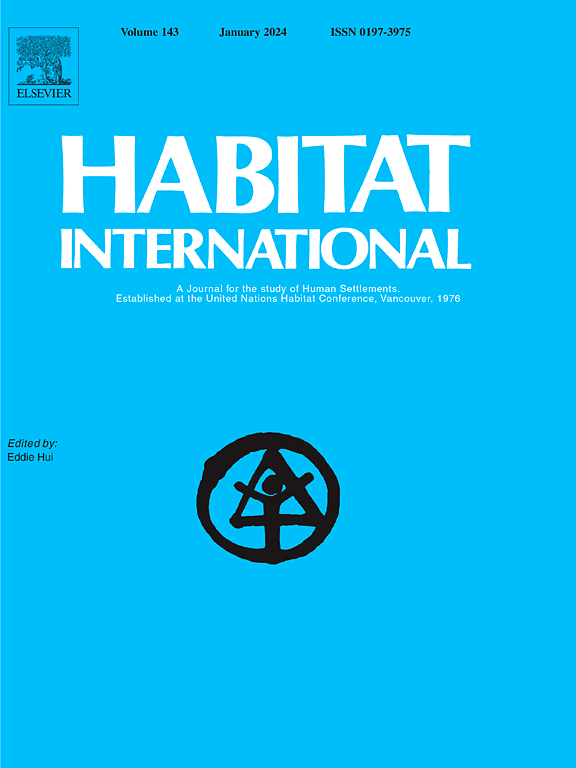基于出行行为视角的各年龄段公共服务设施供需匹配评估
IF 7
1区 经济学
Q1 DEVELOPMENT STUDIES
引用次数: 0
摘要
城市人口密度高造成不同年龄组对公共服务设施的不同需求,对可持续发展中的资源公平分配提出了重大挑战。目前对年龄特异性PSF供需匹配的综合分析研究还不充分。本研究通过利用移动信号数据跟踪广州四个年龄组的日常出行行为,解决了这一差距。通过多元概率计算,引入到访偏好指数(VPI),量化居民对7类公共服务场所在日常出行距离内的偏好。空间分析结果显示:①不同年龄层的出行偏好呈现出不同的特征:青少年优先考虑教育,青壮年优先考虑交通,老年人优先考虑医疗。青少年和老年人具有相似的VPI特征;②交通设施的空间异质性显著,周边地区的交通设施VPI水平高于中心地区。相反,其他六类psf表现出相反的模式。在不同年龄组和不同城市地区,不同类型的PSFs的VPI存在显著差异;(3)在传统生活圈内,psf无法满足95%以上的需求。然而,在扩大半径以匹配不同年龄的旅行距离后,满意度增加到90%以上:老年人9.39公里,青少年12.12公里,中年12.62公里,青年12.86公里。这些发现为优化psf分布提供了有针对性的规划建议。本文章由计算机程序翻译,如有差异,请以英文原文为准。
Supply-demand matching assessment of public services facility among age groups from the perspective of travel behavior
High urban population density creates diverse demands for public service facilities (PSFs) across age groups, presenting significant challenges for equitable resource allocation in sustainable development. Current research on comprehensive analysis of age-specific PSF supply-demand matching has been inadequate. This study addresses this gap by utilized Mobile Signal Data to track daily travel behavior among four age groups in Guangzhou. By employing multiple probability calculations, the Visiting Preference Index (VPI) was introduced to quantify preference for seven categories of PSFs within residents’ daily travel distance. Spatial analysis reveals three key findings: (1) Distinct age-based preferences emerge: the teenager prioritizing education, the youth and middle-aged favoring transportation, and the senior requiring healthcare. Teenager and senior share similar characteristics of VPI; (2) Significant spatial heterogeneity exists: transportation facilities exhibit a higher level VPI in periphery areas than in central areas. Conversely, the other six categories of PSFs showed an inverse pattern. Notable differences in VPI are observed among different age groups and across urban districts for each type of PSFs; (3) Within the traditional living circle, PSFs failed to meet over 95 % of demand. However, satisfaction increased to over 90 % after expanding the radius to match age-specific traveled distances: 9.39 km for senior, 12.12 km for teenager, 12.62 km for middle-aged, and 12.86 km for youth. These findings inform targeted planning suggestions to optimize PSFs distribution.
求助全文
通过发布文献求助,成功后即可免费获取论文全文。
去求助
来源期刊

Habitat International
Multiple-
CiteScore
10.50
自引率
10.30%
发文量
151
审稿时长
38 days
期刊介绍:
Habitat International is dedicated to the study of urban and rural human settlements: their planning, design, production and management. Its main focus is on urbanisation in its broadest sense in the developing world. However, increasingly the interrelationships and linkages between cities and towns in the developing and developed worlds are becoming apparent and solutions to the problems that result are urgently required. The economic, social, technological and political systems of the world are intertwined and changes in one region almost always affect other regions.
 求助内容:
求助内容: 应助结果提醒方式:
应助结果提醒方式:


